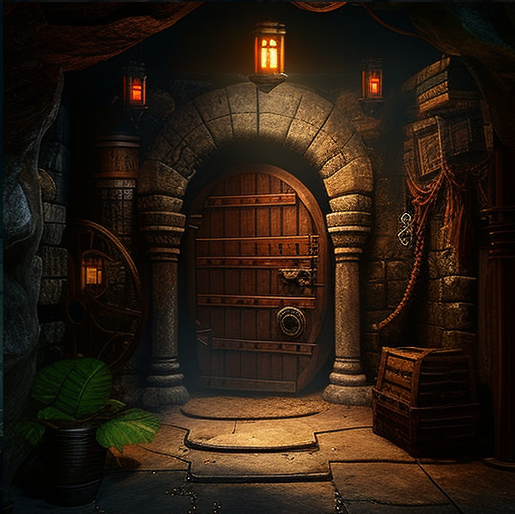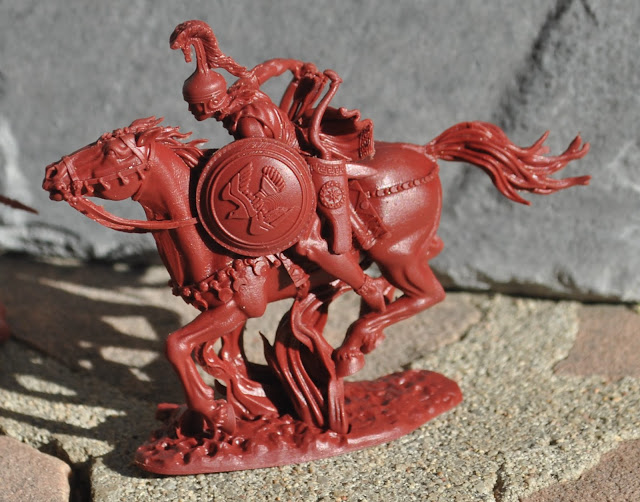
Three great islands surround the forbidden Broken Heart Desert—Amberhaven, Alpengreen, and Umberleap. These are the Verdant Isles, formed and protected by The Great Tree that lifted them up from the sea and ultimately perished protecting in the Cataclysm, its remains forming the Broken Heart Desert. The Verdant Isles are a peaceful realm, inhabited by many different peoples who all agree that life is precious, that the best life isa calm and modest, and that both nature and others should be respected. The roots of The Great Tree still run deep and its sap, long crystalised into Amber has magical properties. Ambersmiths refine it using hives of Sprites, like beekeepers, and the resulting Amber used by Kitchen Witches to cast the more powerful Harmony magic. There are five types, known as the Astra—Flame, Flourish, Ripple, Storm, and Twilight. It is not unusual for the peoples, places, flora, and fauna of the Verdant Isles to be aligned with one of the Astra. Other magics are known, including the making of potions and salves, florists grow magical plants from Sprite-grown seeds, and architects design buildings using magical materials. The Verdant Isles are populated by several peoples of different ‘Ancestries’. The original six are the Deerkin, Finfolk, Floradops, Hoptops, Puffwings, and Snootlings. Finfolk are amphibious; Floradops have soft fuzzy skin and large, multi-coloured butterfly wings and fly; Hoptops are frog-like, amphibious, and like to leap; Puffwings are large, birdlike, and also capable of flight; and Snootlings are alligator-like, also capable of swimming.
However, the Verdant Isles are not entirely free of troubles and mysteries. Such as they are, they are not grand troubles and mysteries, but small intrigues and difficulties that upset or unbalance the calm and modesty, and take away the joy of everyday life across the Verdant Isles. It is some of these small troubles and mysteries that the Player Characters will investigate and sooth ruffled feathers—all helped by a nice hot cup of tea and a slice of cake—in
Teatime Adventures: A Verdant Isles Roleplaying Game. Published by
Snowbright Studios following a successful
Kickstarter campaign,
Teatime Adventures is an anthropomorphic roleplaying designed to be non-violent, identity and gender friendly, and compatible with
Dungeons & Dragons, Fifth Edition. Thus, it does not have rules for combat or physical resolution, only the barest of suggestions—since it is considered incredibly rude, but it does include an extensive magic system, a gazetteer of the Verdant Isles, four adventures, and most importantly cake recipes galore, a suggested tea or each scenario, and a tea steeping guide!
A Player Character in
Teatime Adventures: A Verdant Isles Roleplaying Game an Ancestry, six abilities, an Occupation, a Morale die, and an Astra Alignment. The six abilities are Bustle, Fidget, Vigour, Wits, Sensibility, and Personality, and they range in value from three to eighteen. An Occupation grants a Skill Bonus in three skills and a d8 Morale die or a Skill Bonus in one skill and a d10 Morale die. A Player Character’s Morale Points represents his motivation and will to continue. They can be lost through failure, sad situations, and discovering that you left that tray of scones in the oven for too long. They can be healed through magic, time, and roleplaying reflection. The Astra Alignment is really only important if the Player Character wants to use magic. Skills include Borrowing, Event Planning, Minding Details, Not Getting Lost, Random Facts, and Relish.
To create a character, a player selects an Ancestry, assigns an array to the abilities, and chooses an Occupation. However, deciding on an Occupation is slightly problematic since
Teatime Adventures does not list any. Although the example Player Characters have Occupations such as Mason, Event Planner, and Mail Carrier,
Teatime Adventures suggests that the Game Master and players work together to decide on their characters’ Occupations and suitable skills. It would have been useful if a list of suggested Occupations and their associated skills had been listed.
Otterlie
Ancestry: Hoptop
Occupation: Librarian
Level: 1
Bustle 10 (+0) Fidget 10 (+0) Vigour 12 (+1)
Wits 16 (+3) Sensibility 14 (+2) Personality 12 (+1)
Morale: 8 (d8)
Skills: The Arts +1, Borrowing +0, Charlatanism +1, Cooking +3, Daydreaming +3, Event Planning +1, Fauna Friendship +2, Flora Friendship +3, Focusing +2, Gardening +0, Labour +1, Local Lore +3, Minding Details +4, Not Getting Lost +2, Noticing +3, Random Facts +4, Relish +1, Snooping +2
Mechanically,
Teatime Adventures is simple and straightforward. The Game Master sets the difficulty of a task and the appropriate skill, and the player rolls a twenty-sided die aiming to get a result equal to or greater than the difficulty, adding the skill value in the process. And that really is it to the base mechanics of
Teatime Adventures and that is something of an issue with the roleplaying game. Just like the lack of suggestions for Occupations, there is no guidance on skill difficulties or what exactly constitutes a Morale loss and how much that loss might be. An experienced Game Master will have no issue with any of these problems, but
Teatime Adventures is designed and written to attract an audience that does not want to embrace Dungeons & Dragons’ traditional focus on combat and ‘power fantasy’ and wants a roleplaying game that is LGBTQ+ and disability-friendly. This is undoubtedly a laudable aim and
Teatime Adventures achieves this though the range of NPCs it includes who have their pronouns, details about how they identify and other information clearly presented. Yet if that the members of that audience have bounced off
Dungeons & Dragons and similar roleplaying games because the aforementioned issues, the problem they will have is the lack of advice on running the
Teatime Adventures, which conversely,
Dungeons & Dragons, the roleplaying they do not want to play, actually has.
Where
Teatime Adventures expands in terms of it mechanics. It has two types of magic—Kitchen Magic and Harmony Magic, but both are divided into five types of magic each aligned to the Astra. Kitchen Magic involves the casting of Innate spells or cantrips. For example, the Flourish Astra is all about growth and potential, and its Innate spells are
Duplicate Food and
Soil Check, whilst Twilight Astra is all about the edge of everyday life, hopes, and dreams, and its Innate spells are
Beguile and
Dim. Beyond that, Harmony Magic requires multiple participants to harmonise and cast a spell together. It is entirely in keeping with feel and tone of the setting, but
Teatime Adventures completely undermines the concept. How it is works is that once the players have decided to cast a spell, they select harmony components necessary to cast it. For example,
Snowfall has the components of Area, Cold, and Weather and the requirements of a cup of water and a smidge of soot. The players then add Harmony tokens to a pool face down on the table, the number based on their ability bonuses and Astra Alignment. Then against the clock, players flip the Harmony tokens and use them to match the Harmony component’s pattern on their mats. If this is done within the time limit, the spell is cast. It is a lovely idea, making spellcasting a weighty decision and part of play, but…
The section on Harmony magic in
Teatime Adventures is a single page in length. The section on Harmony magic in
Teatime Adventures is the first time anywhere in the roleplaying game that it is mentioned that physical components are required to play an aspect of the game. The section on Harmony magic in
Teatime Adventures lacks an example of Harmony magic works. It is deeply frustrating that an intriguing system is so poorly, underwhelmingly treated in this fashion. It leaves the Game Master to try and interpret how it works on her own, and ultimately, the easiest and simplest solution, is to replace it with another magic system, which what the authors suggest as an alternative.
If the mechanics are underwhelming and poorly explained, where
Teatime Adventures: A Verdant Isles Roleplaying Game comes into its own is in describing its setting. The world of The Verdant Isles is described in loving detail and flavour, covering their origins, the nature of the Astra, its holidays and festivals enjoyed by all, and its various places and locations in a lengthy gazetteer. The latter drills right down to Oakenbend, which is where the scenarios in
Teatime Adventures are set, describing individual buildings and places in and around the village are set. Thirty or so of the villagers in Oakenbend are given full write-ups ready for the Game Master to portray. In addition, there is a full list of the ‘Spells of the Verdant Isles’, maps of the locations, a set of pre-generated Player Characters, and more.
However, the means to explore the Verdant Isles setting of
Teatime Adventures are threefold—and each one is a delight. The first and most obvious, is the roleplaying game’s artwork, which is luscious and rich, echoing the style of children’s stories read to us when we were young or those we read to our own children and grandchildren. The second is plethora of recipes for cakes and sundries scattered through the book, clearly intended to be baked and served at every tea-infused sitting (or session) of an adventure. Golden Corn Cake, Oakenbread, Hoptop Harvest Pie, and more, plus each adventure includes the teas which should be served with it. The third is the adventures themselves, all set in and around the village of Oakenbend where the Player Characters are sent as part of the Arts & Culture Society of Amberhaven as part of a cultural exchange to learn about the village and its life. The scenarios involve the Player Characters attending the autumnal Leaping of the Hoptops festival in which all but one of the entries in the Hoptop Pie competition are sabotaged and find one of their number accused of the crime; investigating how and why the village’s crop of Star Light plants have withered to dust; working who or what is causing the villagers to disappear during the winter solstice festival of the Feast of Forge and Flame; and exactly what the strange crystalline plant is that has bloomed everywhere in the village during the Feast of Flourish. These are all lengthy adventures, typically requiring two or three sessions to play, plus there is plenty of scope and room for the Game Master to add her own content and scenarios.
Physically,
Teatime Adventures is lovingly presented. Both the artwork and the maps are delightful and the writing is engaging. However, the lack of an index is inexcusable.
Teatime Adventures: A Verdant Isles Roleplaying Game is utterly charming and engaging, its aims highly laudable, but flawed. Its problems all stem from the underwhelming treatment and development of the rules, the lack of presentation and development of the Harmony magic system a thorough disappointment. Yet put those flaws aside, which is entirely possible because the roleplaying game’s mechanics are light enough for the Game Master to substitute a known system which works in the case of magic, and
Teatime Adventures lives up to all of its aims. The roleplaying game is all the more relaxing and thoughtful without the threat of physical violence or combat being present, and of course, the combination of play with tea and cake enhances that.
Teatime Adventures: A Verdant Isles Roleplaying Game is a lovely roleplaying game, friendly and amiable, which the Game Master will need to develop aspects of the roleplaying game to get it really working as the designers intended.











.JPG)
.JPG)
.JPG)














